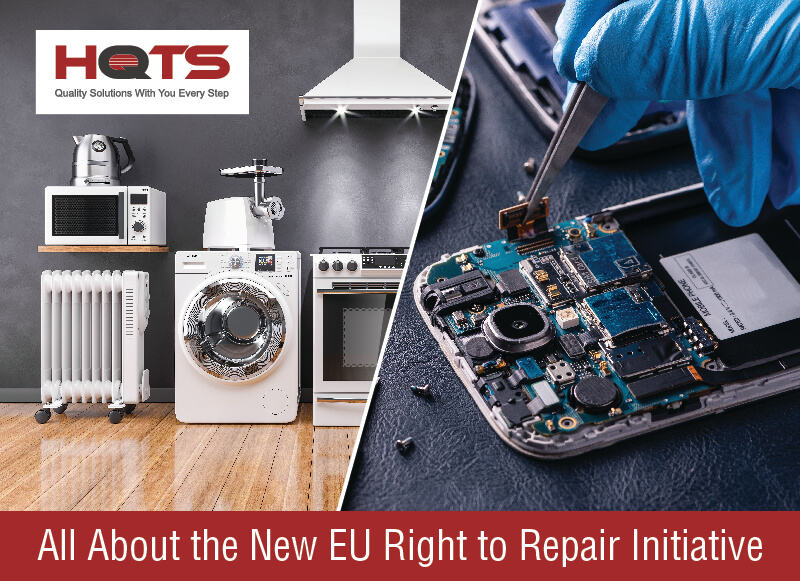Today’s consumption patterns are unsustainable. In the EU, demand for materials is expected to double between 2010 and 2030, but only 12% of the materials we produce in goods come from recycled materials.
In this regard, the consumption of electronics is particularly a concern for Europe, with nearly 16 kg of e-waste generated per person. The Europe right to repair policy is a response to the growing frustration with manufacturers who are not making spare parts available or charging exorbitant prices. It also aims at limiting the environmental impact of electronic waste and reducing the cost of owning a product. This article will cover the latest developments in European right to repair legislation.
What Is the Right to Repair?
Right to repair is a movement that advocates for the consumer’s right to repair their products. It is an effort to make it easier for people to fix broken items and not buy new ones.
The Right to Repair movement started in the US, specifically in the automotive industry. As a result, the Repair Association (TRA) was founded in 2013 to extend the same principles to encompass an extensive range of electronic products.
Why Was the Right to Repair Movement Started?
The Right to Repair movement was started because of the lack of manufacturer transparency. Over the years, manufacturers of a wide range of products – across multiple industries – made it increasingly difficult for consumers to repair their products by limiting the availability of spare parts, making it only available for a few years after the product was initially released. They can also restrict who can repair them, such as their own approved repairers.
What Are the Benefits of the Right to Repair?
The Right to Repair movement is part of a continuing effort to reduce the world’s carbon footprint while also reducing energy consumption and hence, reducing the energy bills for consumers. Some key benefits of the Right to Repair include:
- Increasing transparency regards to service manuals, diagnostic tools, and replacement parts.
- Positive effects on the environment and society.
- Avoid high costs to fix or replace parts.
What Are the Disadvantages of the Right to Repair?
On the surface, the Right to Repair scheme ought to be beneficial for consumers, but some disadvantages need to be taken into account:
1. Safety
Customers who need their electronic devices repaired usually want them operational quickly and at a reasonable cost. Speed and price are normally the top priorities, and working on these devices yourself can be slow. Waiting for replacement parts to arrive can be time-consuming, and the work could potentially be dangerous too. The right to reply scheme suggests that manufacturers should consider educating consumers on where to buy replacement parts and how to repair their devices in such a way that they avoid any safety issues.
2. Security
Compromising security is a large risk to be considered when it comes to the right to repair law. The Security Industry Association (SIA) has expressed concerns about allowing customers to fix their own devices as it could provide hackers with increased access and power. Consumers must conduct their research and should be correctly informed by the manufacturers on how to avoid creating any security risks.
3. Environment
Equipment repair will hopefully reduce carbon emission and material waste compared to dumping and replacing the item. Thousands of usable products and devices are shredded, crushed, or thrown away instead of being fixed and reused. Therefore, manufacturers must ensure their after-sales service is efficient and effective to ensure consumers are throwing away less material while advising consumers on how best to recycle any faulty parts that may be removed.
Where Is the Right to Repair Scheme Being Passed Into Legislation?
The Right to Repair scheme is passed into legislation in Great Britain, the EU, and Ireland, and was approved in March 2021. Aside from this, since February 2021, it has already been accepted by 14 states in the USA. These new rules are likely to extend the lifespan of products by up to 10 years while also reducing the 1.5 million tons of electrical waste.
The Right of Repair in the European Union (2019 Ecodesign Package)
In March 2021, the first eco-design regulation defined standards for repair, and the term ‘useful life’ came into force, implying that manufacturers of washing machines, dishwashers, refrigerators, and monitors have to ensure that components are replaceable with common tools that consumers can easily use.
Cell phones, computers, and tablets have not yet regulated by an EU eco-design directive and constitute some of the most harmful consumer waste. These were linked to new, revised, and rescaled EU Energy labels and new European material efficiency standards.
Overview of Repair Requirements in the EU
What exactly do these right repair act in Europe say about repairs? Three notable aspects are tackled in them.
- Non-destructive disassembly of key parts – All the different product regulations have specific instructions for what parts to include in the product, which should be easy to take apart with commonly available tools.
- Availability of key spare parts – Manufacturers must provide spare parts for the number of 7-10 years, depending on the product. The procedure to order these parts must be introduced at a maximum of 2 years after a product is placed on the market and delivered to the end user at a maximum of 15 working days.
- Availability of repair information – There are regulations on the repair information that needs to be provided. Including disassembly maps, wiring and connection diagrams, lists of necessary repairs and test equipment, diagnostic information, and more. This information must be provided for a specific amount of time, and it must be available two years after the product is placed on the market for free or at a reasonable fee.
What Are the Limitations of the Europe Right to Repair?
Unfortunately, there are many limitations to the right of repair in Europe. Including that it only applies to a selected number of products, the repair information and spare parts target professional repairers and not end-users, and the price of the spare parts is undressed.
How are Manufacturers and Buyers Affected by the Right to Repair in Europe?
The Right to Repair scheme not only places new requirements on the manufacturers of electronic products. But it can be thought of as offering advantages to those companies that embrace the initiative and create a competitive advantage. To understand the scheme in more detail and to see how manufacturers and buyers will be affected, AQM BD organized a webinar dedicated to the EU’s Right to Repair and what the future landscape of the E&E in broader Europe will look like. Watch the webinar below, and don’t forget to subscribe to our newsletter to stay in the loop on our next webinar.





